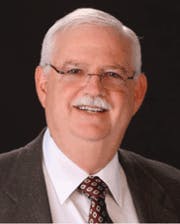Consultants vs. Culture: Can the Two Work Against Each Other?
Controlling the influences on culture is necessary for excellence, and opening the door to outsiders can seriously compromise that control. However, this collision between consultants and culture is avoidable if the potential for it is recognized and intelligently managed.
Organizational downsizing has been a significant influence on this issue in two different ways. First, downsizing has impacted culture. Lean organizations often lose opportunities for contact between employees, which can be culture-building. Reducing the workforce inevitably eliminated key members of the culture and caused a redefining of the group. It also often increased the pace of work and the diversity of tasks each remaining worker inherited.
Second, downsizing made the use of outside expertise necessary, as specialists and subject-matter experts were eliminated from their internal positions. Organizations decided they could hire outside expertise when they needed it more efficiently than they could keep highly paid experts on staff. While downsizing enabled some organizations to better focus on their core competencies, it also redefined their culture and the relationship to certain experts who can influence it.
The focus on safety culture is the natural maturing of safety efforts. We began with traditional controls over conditions and behaviors that impacted safety. We made the workplace safer and then focused on the worker in that workplace. As we mastered the basics and overcame the highest-probability risks, we began to realize that we cannot control everything. Some aspects of safety still are impacted by individuals and groups, and the dynamics they develop.
Some precautions don't need to be rules or procedures, but need to be adopted as common practice by the people who do the work. Leaders can influence such group dynamics, but there are other influences as well. Few organizations reach true excellence in their safety performance without addressing these cultural influences.
Since many organizational leaders know little about safety, they seek expert help. Consultants have assisted with the workplace design and upkeep, with addressing worker behaviors and now with safety culture. The use of outside expertise is not, in and of itself, the problem. It is the way in which such expertise is used that makes the crucial difference. Outside experts actually can help strengthen the culture if they are utilized correctly. Unfortunately, there are two reasons why this seldom happens.
The first reason lies within the consultants and their business model. Since managers seek expertise, consultants try to impress with their credentials and turn their expertise into a product for sale. This usually entails turning science into technology.
The one expert personally cannot service enough clients, so he or she develops a process based on expertise but dummied down so lesser consultants can deliver it. To maintain uniformity and quality control over many consultants, the process for sale basically must be the same for every client. This means it may not be a good fit for the culture. Many processes have a degree of flexibility to allow for a better fit, but there still are more unique cultures than unique consulting products and processes.
The second reason consultants often are misused to the detriment of culture simply is that managers tend to delegate tactics rather than develop strategy for safety. The lack of an overarching strategy for safety means that there is no standard by which to judge a consultant's product other than the sales pitch. Is this product a good fit with a strategic goal or just a tactic to move a number in the desired direction?
Any time something as critical as safety is delegated to an outside source, you risk sending the message that:
1.) Safety is not an integral part of the culture;
2.) Safety is separate from (and not as important as) other priorities that are not delegated to outsiders; and
3.) The organization does not know how to make safety happen within its own management systems.
Any or all of these messages are potential safety culture killers.
The proper utilization of outside expertise is not overly complicated, but it usually takes more work on the part of organizational leaders. Experts should be utilized as gurus, not as grunts. They should be strategic advisors at the highest level, not implementers at the lowest levels. This necessitates that leaders realize the need for a safety strategy and not just a program to lower accident rates.
Other core values of the organization are not delegated or addressed without strategic thinking and planning, neither should safety. Experts greatly can assist in strategic thinking, and the organization can gain a clear vision of where they want to go and how to get there. Experts also can help assess current status to better enable navigating toward desired goals.
Once the strategy is set and the vision is shared, it is critical that the steps of the journey be led from within the organization. This does not mean that experts cannot be utilized to advise and assist at each level; it means that the strategy must be internalized and complete delegation makes internalization difficult or impossible. At some point, the student must take over from the master. This means that the utilization of outside experts should have a well-planned disengagement, not a long-term dependency.
Just like any tool or resource, outside expertise can be used to help or to harm. As we turn our attention to safety culture as the next potential step change toward excellence, it is crucially important that we understand the potential for good and evil that safety consultants have. Make sure that any consulting project is based on the strategic needs of your culture, and not just the expertise or product of the consultant.
Terry L. Mathis, the co-author of "STEPS to Safety Culture Excellence" and founder and CEO of ProAct Safety, was named one of "The 50 People Who Most Influenced EHS" for the third consecutive time in 2013 by EHS Today. As an international expert and safety culture practitioner, he has worked with hundreds of organizations customizing innovative approaches to achieve and sustain safety culture excellence. He has spoken at numerous company and industry conferences, and is a regular presenter at NSC, ASSE PDC and ASSE SeminarFest. He can be reached at 800-395-1347 or [email protected].
About the Author
Terry L. Mathis
CEO
Terry L. Mathis is the co-author of “STEPS to Safety Culture Excellence” and founder and CEO of ProAct Safety. In 2013, EHS Today named him one of “The 50 People Who Most Influenced EHS” for the third consecutive time. He can be reached at 800-395-1347 or [email protected].

